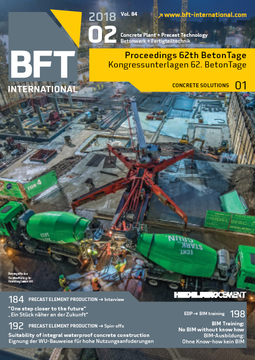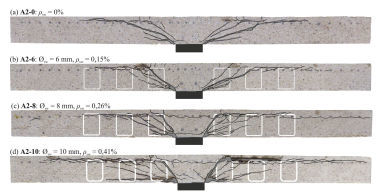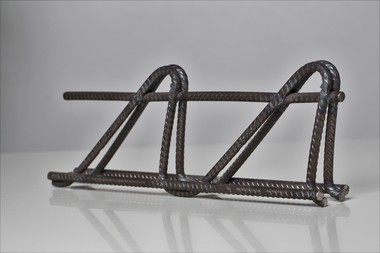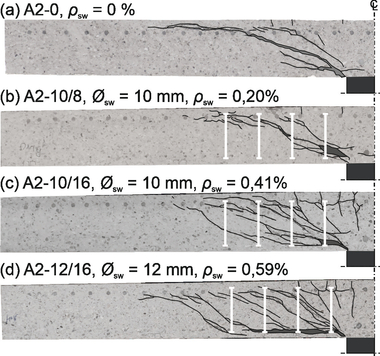Experimental investigations
The punching shear design provisions for footings and ground slabs were revised with the introduction of Eurocode 2 in Germany. In contrast to previous German codes, the location of the control perimeter has to be determined by iteration minimizing the punching shear capacity, which particularly applies to compact footings. For the design of the punching shear reinforcement, Eurocode 2 introduced a truss model with a strut inclination of 33° and a constant concrete contribution independent of the type of member. Due to safety related concerns, the German Annex to Eurocode 2 (EC2NA) defines deviating provisions for footings and ground slabs. In this context, EC2NA requires the shear reinforcement in the first two rows to carry the whole shear force (no concrete contribution). The results of existing punching tests on reinforced concrete footings can be used to evaluate the code equations for punching shear capacity without shear reinforcement (Fig. a) and maximum punching shear capacity (Fig. d). Nevertheless, due to the lack of systematic test series on reinforced concrete footings with a failure inside the shear-reinforced zone (Fig. b, c), an evaluation of the code provisions for the design of the shear reinforcement has not yet been possible.
To investigate the punching shear behavior of reinforced concrete footings with stirrups as punching shear reinforcement, a total of 11 punching tests (3 test series) with a varying amount of shear reinforcement were conducted. In the tests, the amount of shear reinforcement was varied by changing the stirrup diameter. In this contribution, the results of the tests are discussed and compared to the predictions according to Eurocode 2 and EC2NA.








